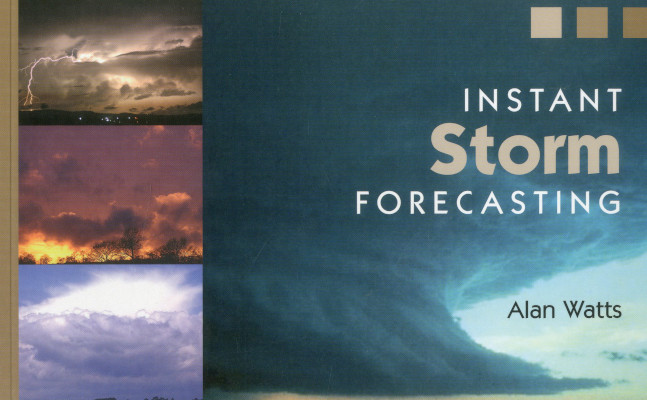
Everyone on this planet is affected by weather. Some — like sailors and motorcyclists — maybe more than others, so anything that could help us understand and maybe even predict the weather is good.
Instant Storm Forecasting by meteorologist and sailor Alan Watts is the latest in his now three-book “Instant” series. (The other two are Instant Weather Forecasting and Instant Wind Forecasting.) The 17 short chapters in this book are well illustrated with drawings and stunning photos.
Written by a sailor with sailors in mind, this book is actually for anyone who desires an understanding of weather, as it also covers mountain storms, avalanches, floods, and other land weather. But sailors come ashore, so these topics affect them also.
As a total weather dunce, I approached this book with a high level of trepidation, and also with high hopes that it would help me to finally understand this rather confusing topic. I understood the “basics,” but all those “highs,” “lows,” “depressions,” “occlusions,” etc., from the TV weather forecasts kept me thoroughly confused. I simply accepted their final forecasts with no real comprehension of the why’s or how’s.
The first two chapters cover the weather systems of the world and what drives them, and concepts that help in forecasting storms. The remaining 15 chapters focus on weather phenomena (like gales, thunderstorms, snowstorms, and tornadoes and waterspouts), explaining how each is formed, what causes them, and precautions and preparations to take when these storms approach. Most chapters also contain helpful charts on such things as El Niño, weather winds of the world, mountain weather patterns, storm indicators, and many others.
This is not a book for light reading. I found the need to read and re-read passages a number of times to grasp some concepts that I felt could have been better explained. The lack of a dedicated appendix with definitions of all the different terms is also a real shortcoming. The terms and their sometimes-vague explanations were buried in the text and difficult to locate when I wanted to read them again.
Instant Storm Forecasting will not turn someone into an instant weather guru but, with diligent study, it could help you to better understand our planet’s weather and what causes it, and to, occasionally at least, foretell coming storms — something useful to any sailor. I now (mostly) understand the television weather charts. Obtaining the two companion volumes would probably benefit anyone desiring more weather understanding.
Instant Storm Forecasting by Alan Watts (Sheridan House, 2009; 64 Pages)




